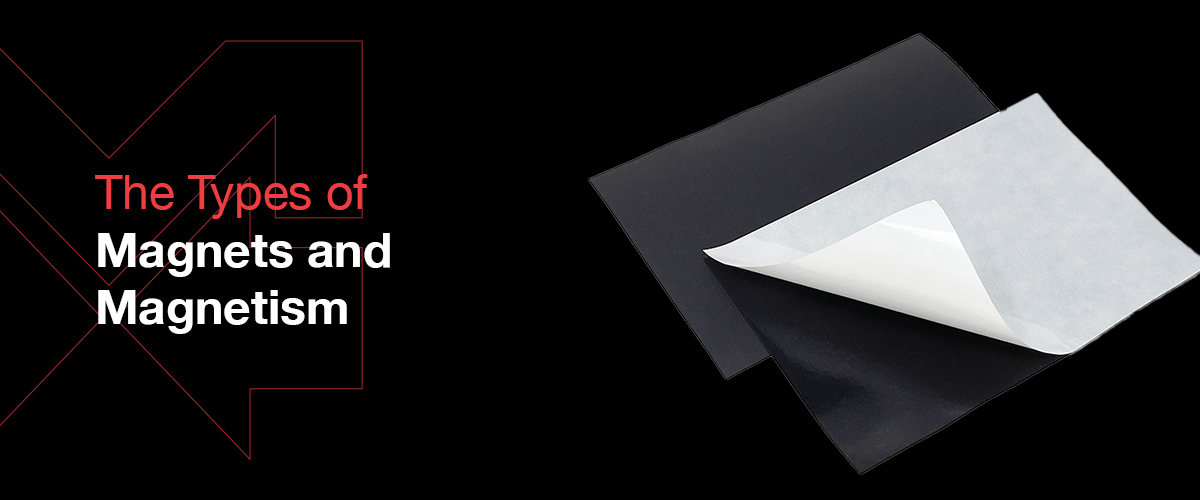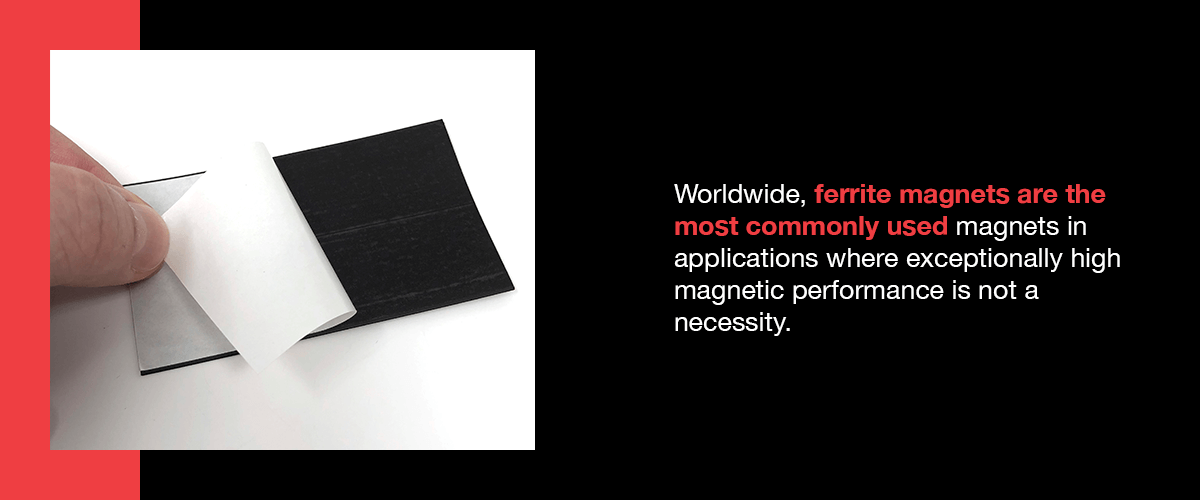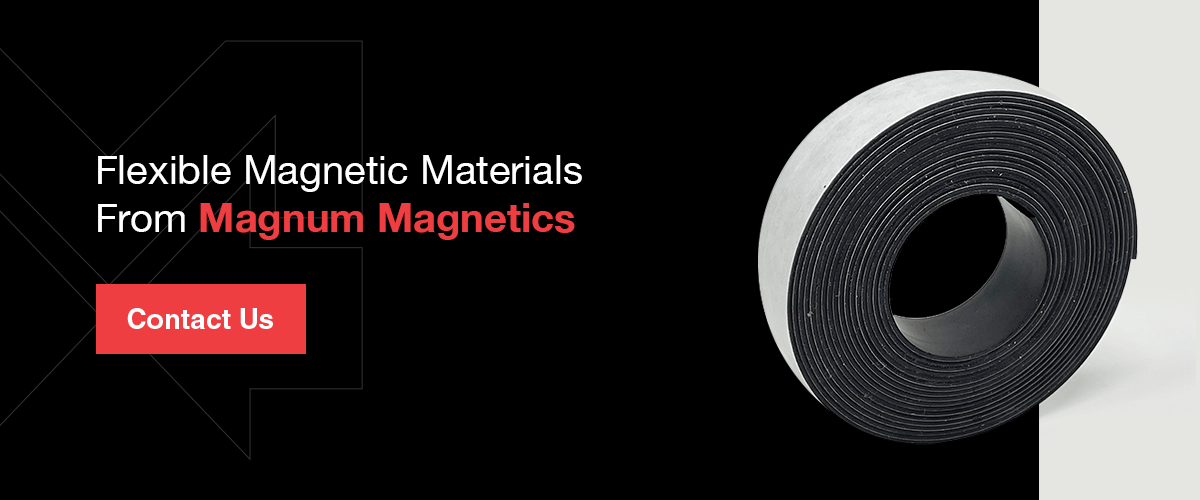Exploring the Various Types of Magnets and Magnetism

Whether your company is a retail business that sells refrigerator magnets, a signs and graphics business producing magnetic products, or an engineering company or original equipment manufacturer (OEM), you may use magnetic products in some form, such as neodymium magnets or electromagnets.
In any case, understanding the main differences between the various types of magnets, including rare earth magnets, and how they function is crucial. What are the different types of magnetic fields, for example, and what does that mean for how magnets behave? We’ll take an in-depth look below.

Temporary vs. Permanent Magnets
Temporary and permanent magnets differ in whether or not the materials that compose them are inherently magnetic or nonmagnetic. Permanent magnets, like neodymium magnets, create and maintain their long-term magnetic fields without any outside help.
Some minerals, such as iron, nickel, and cobalt, are inherently magnetic. The rare-earth metals, including the lanthanide series, are also naturally magnetic and are used in rare earth magnets.
We find these metals in many everyday products, including the components in our computers and smartphones. The refrigerator magnets in our kitchens often contain permanent metal magnets like neodymium magnets.
Many metals, such as lead and aluminum, can act as temporary magnets. Other materials are not inherently magnetic — they do not automatically create their magnetic fields. However, they can become magnetized and act as magnets for a short time in the presence of a magnetic field.
Creating temporary magnets works something like this: Think of what happens if you rub a magnet against a paper clip. The magnet is permanent, and the paper clip is not. However, the magnetic field from the magnet can temporarily magnetize the paper clip. For a short time afterward, the paper clip has a magnetic charge that enables it to attract other paper clips.
Electromagnetism is essential in creating specific temporary magnets. The strong magnets often at work in scrapyards are electromagnets, for instance. An electromagnet is created when an electric current generates an electromagnetic field. An electric current runs through the magnet, giving it an electromagnetic charge that enables it to permanently separate magnetic metals, such as iron, from other types of metals. When the electric current turns off, the electromagnet is no longer magnetic.
4 Common Types of Permanent Magnets
Below are four of the most common types of permanent magnets:
1. Neodymium
Neodymium magnets are the strongest type of permanent magnets. They are typically alloys of the elements neodymium, iron, and boron. They may also contain traces of praseodymium and dysprosium. General Motors and Sumitomo Metal Industries developed these magnets in the 1980s, and because of their tremendous strength, they are still widely in use.
Neodymium itself is a rare-earth metal in the lanthanide series. It is a hard but somewhat malleable silver metal in its pure form. It is relatively abundant in the earth’s crust.
Together, neodymium and other metals make an alloy known as Nd2Fe14B, which is the strongest magnetic material in the world. It is prevalent in many types of commercial and industrial equipment requiring tough, durable parts. For instance, neodymium magnets are often the magnets of choice for electric vehicle motor designs.
Neodymium magnets are beneficial in applications that require extreme resistance to demagnetization, though they tend to have low maximum operating temperatures compared to other magnets.
2. Samarium Cobalt
A samarium cobalt magnet is a type of rare-earth magnet — samarium is a rare-earth metal. In its elemental form, samarium is a shiny, silvery metal with about the hardness and density of zinc. Cobalt is a harder metal that occurs naturally only in a chemically combined form. Samarium cobalt magnets combine the two elements, samarium, and cobalt.
The U.S. Air Force Materials Laboratory developed samarium cobalt magnets in the 1970s. Until the development of neodymium magnets, samarium cobalt magnets were the strongest in the world — three times stronger than any magnetic materials known at the time.
Today, samarium cobalt magnets are available in two grades with extremely high magnetic strength. Although they are not as strong as neodymium magnets, they can maintain their magnetic stability even at relatively high temperatures. The cobalt in them makes them rather expensive to manufacture, however.
3. Alnico
“Alnico” is an amalgam of the words aluminum, nickel, and cobalt, the three main components of these magnets. Alnico magnets also often contain traces of other metals that can enhance specific characteristics.
Alnico magnets have been in use for about 100 years. They were some of the first permanent magnets to be developed, and because of their relative strength and stability, they are still widely used today.
Alnico magnets are not as strong as samarium cobalt or neodymium magnets. Nevertheless, they offer exceptional magnetic stability even at extremely high operating temperatures — higher than any other type of permanent magnet. They are relatively susceptible to demagnetization, however.
4. Ferrite
Ferrite magnets contain iron. Some have pure iron, and others consist of iron mixed with barium and iron oxide or strontium carbonate.
Ferrite magnets are much weaker than neodymium or samarium cobalt magnets. However, their much more economical production costs often offset this disadvantage. Worldwide, ferrite magnets are the most commonly used magnets in applications where exceptionally high magnetic performance is not a necessity. Their sales represented an international market value of $5.58 billion as of 2020.

Types of Magnetism
Below are the main types of magnetism and how they work:
-
Antiferromagnetism: Antiferromagnetism is the opposite of ferromagnetism. Currently, the only known antiferromagnet is chromium. Instead of attracting other metals as ferromagnets do, chromium repels them. Like ferromagnets, though, it does not require an external magnetic field to work.
-
Ferrimagnetism: Ferrimagnetism splits the difference between ferromagnetism and antiferromagnetism. Like ferromagnets, ferrimagnets are magnets even in the absence of an external magnetic field. Like ferromagnets, ferrimagnets contain certain electrons that attract other metals. Like antiferromagnets, they also have some electrons that repel other metals. Electrons that attract are more numerous in these magnets than ones that repel.
-
Diamagnetism: Diamagnetic materials typically repel magnetic forces when exposed to them. Diamagnetism is common in elements such as beryllium, hydrogen, halogens, noble gases, and most nonmetals and semimetals.
-
Paramagnetism: Paramagnetism is the opposite of diamagnetism. Paramagnets attract magnetic forces in the presence of a magnetic field. They are generally temporary magnets — they do not have their own magnetic fields but will become magnetic in the presence of one. Examples of paramagnets include alkali metals, many transition metals, aluminum, tin, and oxygen.
-
Superparamagnetism: Superparamagnetism is paramagnetism at a very strong level. Superparamagnets are much more attracted to magnetic forces than other temporary magnets.
Flexible Magnetic Materials from Magnum Magnetics
When your company needs high-quality magnetic products for anything from refrigerator magnets or magnetic business cards to engineering applications, make Magnum Magnetics your trusted source. You’ll gain competitively priced, high-strength magnets made from high-quality materials when you work with us.
We make our magnets right here in the United States, so you’ll know you’re supporting domestic manufacturing when you buy from us. Since we manufacture our magnets domestically, we can also ship your products to you promptly.
Contact us today to learn more about our magnetic materials, including our range of neodymium magnets and other types of magnets.
